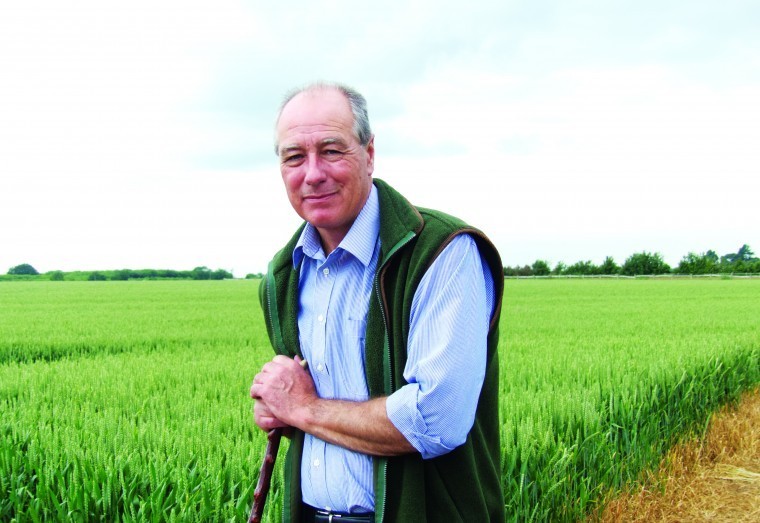We continue to experience dry conditions in Kent with less than 10 millimetres of rain in the last month. Clearly we have now had a very dry spring after the long wet winter and that is normally the precursor to a wet August.
Not surprisingly the weather outlook finally mentions heavy rain for the South East and unsettled conditions prevailing through the remainder of July. Winter crops are made now, for good or bad, with the earlier fields looking fair to good with harvest only days away for winter wheat. The rain if it arrives as forecast will still make a significant difference to the spring crops.
Of late I have been asked a number of times if the spring cropping has helped reduce blackgrass numbers and clearly there is much less in the spring crops even where we have had poor pre emergence control and less crop competition than we would have hoped for.
Seed return should also be much less per plant from less tillers but whether it has done enough to reduce the burden for winter wheat to follow spring beans only time and a year’s experience will demonstrate. Clearly the spring barley will be followed by a further break crop in winter or spring so there is another opportunity to reduce blackgrass seed numbers before we get back to wheat.
In theory as we continue to tackle the numbers it should get easier and with sterile strips around fields stopping grass weed spread from hedgerows and grass margins, that is going in the right direction. We have for the first time in a long while deployed hand roughing to remove isolated blackgrass and ryegrass in wheat crops where we intend to follow with second wheat. A different philosophy or perhaps just a return to an earlier one when the problems were slightly different.
We have just started combining winter oilseed rape as I write on 22 July and from some combination of events the first fields are at Down Court. They have looked the best oilseed crops we have growing, throughout the year, which is a good thing as I drive down the road each day and have to look at them. The 80 hectares was seeded over a Simba Solo with the conventional variety Charger with a strip of the hybrid Poplar as we ran the seed unit out. Drilling date was 4 September and the last block we planted. Everything we drilled before that looks poorer in the field and I have no doubt will be at harvest.
The one exceptional feature was that Down Court Farm was treated with bio solids before autumn cultivations and if there is any information to be gleaned it is that the nutritional boost from the bio solids has led to positive yield effect on this occasion. The yield was a very respectable 4.48 tonnes a hectare, less than nine percent moisture off the combine and across a weighbridge.
We have moved on to the next block and as I expected yields have dropped back to nearer 3.75t/ha and will keep on falling as we get to poorer fields. With the moderate prices for oilseed we will be back to looking firmly at costs to make some economic sense of growing it and with good conventional varieties challenging for top trial yields, hybrid seed sales are going to come under pressure as currently priced and in all likelihood farm saved seed will challenge both types of new seed.
As I mentioned in earlier articles the Greek problem would eventually find a solution to keep the country in the euro with a further bailout. Fraught it may have been – especially for the Greeks – but that has come to pass. Unfortunately it looks such a basket case economically that it has lowered the value of the euro against the pound taking our prices down further. You really cannot predict these things and with the addition of a bit of talking up of interest rates as well leading to further strengthening of the pound, I imagine every exporter in the country, including grain traders, must be wondering how much more they want to hear from the governor of the Bank of England.
The one other advantage of cutting the oilseed at Down Court is that our fledgling barn owls suddenly have plenty of ground to hunt. In a second owl box we also had a brood of five kestrels that all fledged so we have seven kestrels hunting during daylight and four barn owls at night. Whatever mice and voles have bred in our surrounding arable fields they are in for a fairly dramatic population cull in the next few weeks.




